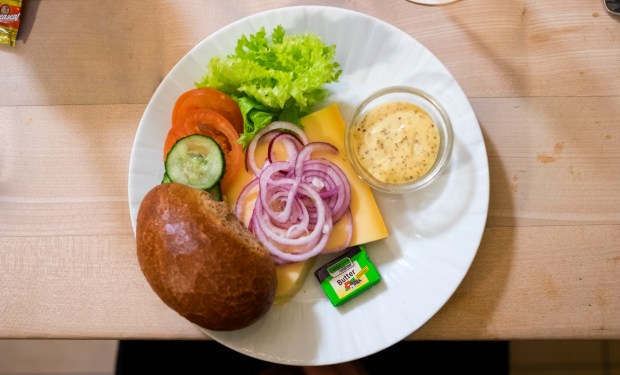The hungry traveler unfamiliar with the peculiar etymology of this simple but mighty beer snack might order a “half rooster” from a Rhineland bar menu, and be very disappointed when instead of a tasty, steaming bisection of roast poultry, they are served a bare-bones cheese sandwich. Not even grilled at that.
The “Halve Hahn”—“half rooster”—is an essential food pairing to endless glasses of Kölsch beer in the Kneipen of the Rhineland. It’s just half a Roggenbrot (rye) roll, (or the easy-to-pronounce “Röggelchen”), buttered, served with a generous slab of medium-ripe Gouda cheese, garnished with onion, lettuce, maybe a gherkin. Medium-strength mustard is the final flourish. It’s a starter kit—you get the constituent parts, plus a knife to attack it in-between gulps of cool beer.
Like many great dishes, and indeed, great sandwiches, its origins (and the origins of its name) are rooted in competing legends. However, unlike many other beloved but disputed meals, there is no blood, war, or palace intrigue in these stories—and the Halve Hahn origin tales may or may not explain the rooster thing. “Halve” is from the word “half” (halb) for the roll, possibly. The “Hahn” part could be a corruption of the verb “to have” (“haben”) perhaps from the sandwich’s early years of existence (“Can I have a half?”). Perhaps the most popular story is that the name is the handiwork of a young man named Wilhelm Vierkötter, who played a clever birthday party prank on his guests by ordering them 14 half roast chickens, but got the waiter to serve 14 half-rolls with cheese instead. (This was evidently considered a winning joke circa 1877).
By the way, in German “Hahn” is also the word for a faucet. Now you know.
Recipe:
Rye bread roll
Gouda
Mustard
Serving suggestion: with many glasses of beer.
